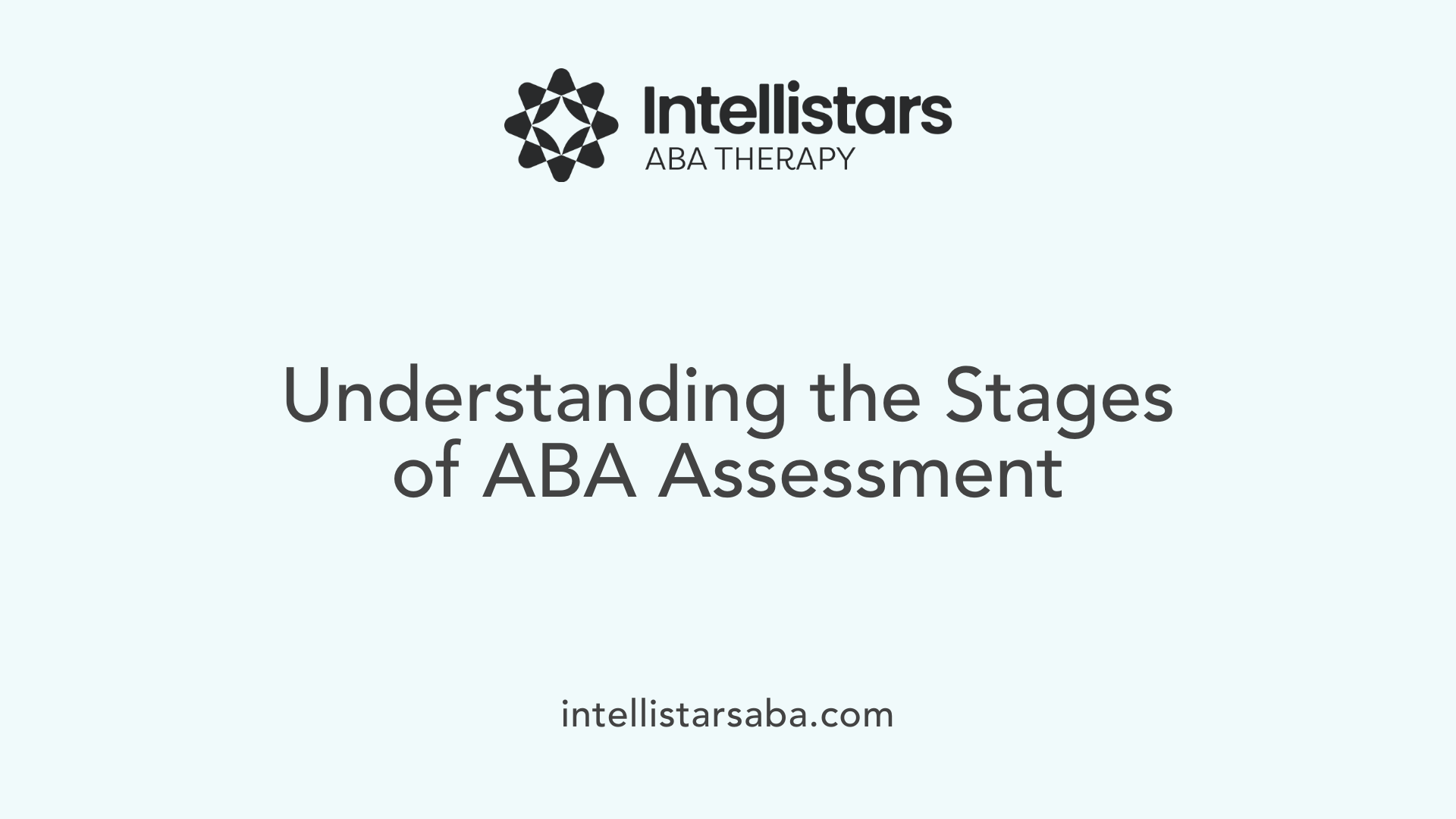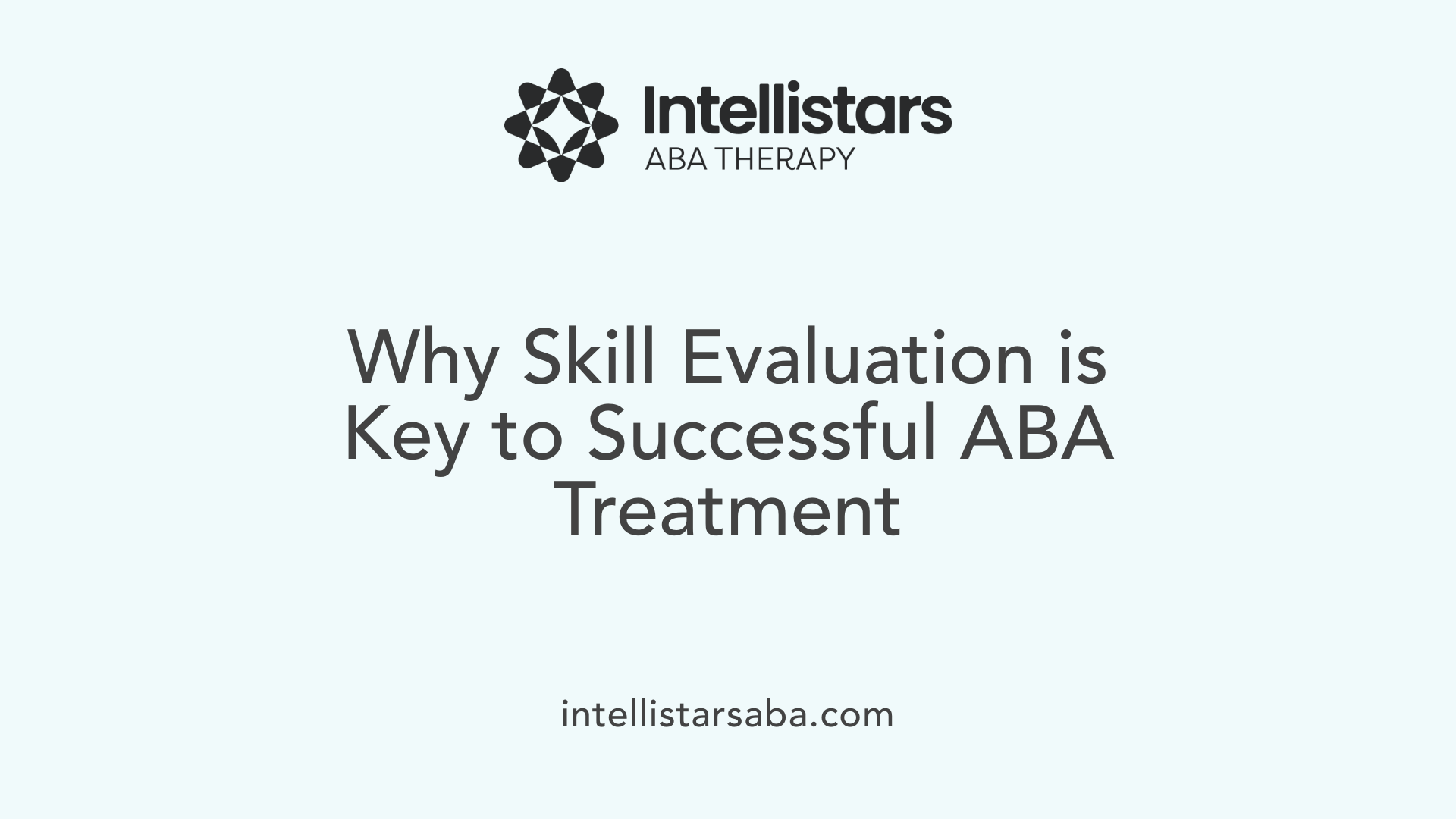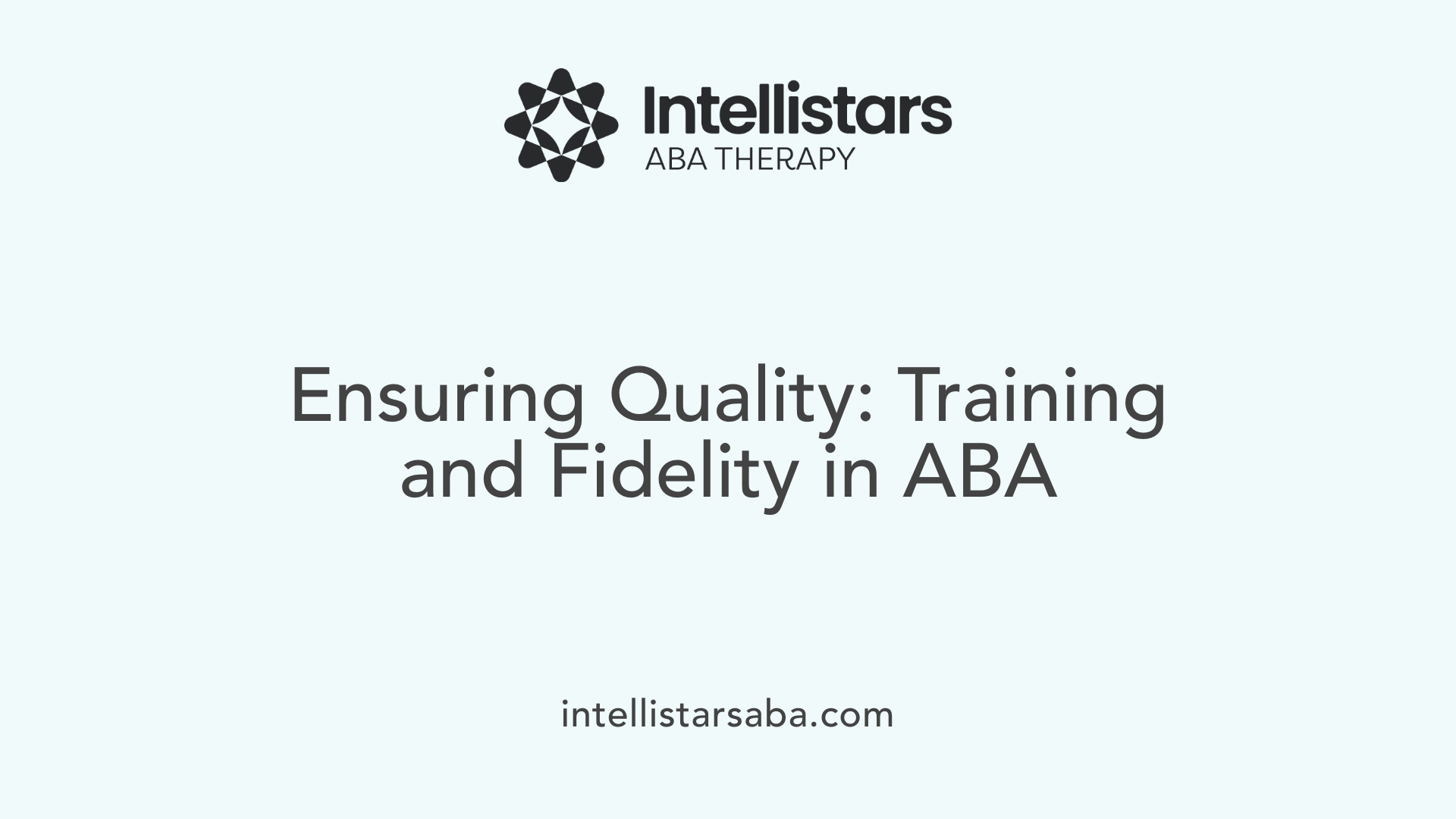Understanding What a Comprehensive ABA Evaluation Entails
Applied Behavior Analysis (ABA) is widely recognized as an evidence-based approach to improving the lives of individuals with autism spectrum disorder (ASD). Central to effective ABA therapy is a thorough assessment process designed to identify current skills, strengths, challenges, and behavioral patterns. This article explores the core skills evaluated during comprehensive ABA assessments, highlighting the methodologies, tools, and stages involved. By understanding these components, caregivers and practitioners can appreciate how tailored interventions are formulated to promote independence and skill development.
The Fundamental Purpose of ABA Assessments
Assessing current skills and abilities
An essential part of ABA assessments is to evaluate a child's existing skills and abilities. This comprehensive evaluation helps identify what the child can do well and areas where they need more support. It includes observation of communication, social interactions, daily living skills, and academic performances.
Identifying strengths and challenges
ABA assessments are designed to pinpoint both strengths and difficulties within a child's developmental profile. Recognizing these areas enables practitioners to focus on building on the child's strengths while addressing the specific challenges they face, such as language delays or problem behaviors.
Guiding personalized treatment plans
The data gathered through assessments provide a foundation for creating tailored therapy programs. This individualized approach ensures that interventions target the child's unique needs and developmental levels, focusing on skills like communication, social skills, or self-care, which are vital for independent living.
Tracking progress over time
Ongoing assessments allow caregivers and therapists to measure progress, see what strategies are effective, and make necessary adjustments. Regular data collection helps in setting realistic goals, maintaining motivation, and ensuring that the child continues to develop skills and reduce problematic behaviors.
What is the purpose of an ABA assessment?
The purpose of an ABA assessment is to comprehensively determine a child's current skills, abilities, strengths, and challenges across various developmental areas. It helps identify specific deficits and target areas for intervention, guiding the development of personalized, evidence-based treatment goals. The assessment process involves collecting data through standardized, criterion-referenced, or curriculum-based tools, often with input from caregivers and other stakeholders. This information allows providers to track progress, adjust interventions, and ensure that goals are measurable, attainable, and relevant to the child's needs. Overall, ABA assessment aims to inform effective therapy planning, promote skill acquisition, reduce problematic behaviors, and support continued developmental progress.
More Information
A thorough ABA assessment is a cornerstone of effective autism treatment, ensuring interventions are appropriately targeted and adaptable as the child's skills evolve.
Core Skills Evaluated in ABA Assessments
What is the purpose of an ABA assessment?
An ABA assessment serves as a detailed evaluation that identifies a child's current abilities, strengths, and areas needing support across different developmental domains. Its main goal is to create a clear picture of what skills the child has and where they may face challenges, which helps in designing personalized treatment plans.
During this process, various data collection methods are used, including standardized tests, curriculum-based assessments, and direct observations. Input from caregivers and educators is also gathered to understand the child's behavior in different settings.
This comprehensive approach allows practitioners to set measurable, attainable goals that are tailored to the child's unique needs. The assessment results are used to track progress over time, make necessary adjustments to the intervention strategies, and ensure that therapy remains relevant and effective.
Ultimately, ABA assessments aim to improve the child's skills, reduce harmful behaviors, and support ongoing development by guiding targeted, evidence-based interventions.
What core skills are evaluated?
The assessments focus on several key areas:
| Skill Area | Description | Evaluation Methods |
|---|---|---|
| Communication skills | Verbal and non-verbal language abilities essential for expressing needs and thoughts. | Observation, language milestones assessments like VB-MAPP, ABLLS-R |
| Social interaction and skills | The child's ability to engage with peers and adults, including sharing, turn-taking, and greetings. | Direct observation, social skill inventories |
| Cognitive and learning abilities | Problem-solving, understanding concepts, and flexibility in thinking. | Standardized tests, functional assessments |
| Motor and physical skills | Fine and gross motor coordination, imitation, and physical self-care. | Motor skill checklists, observation |
| Self-care and daily living skills | Basic routines like dressing, eating, hygiene, and safety awareness. | AFLS assessments, functional living skills checklists |
How assessments influence therapy?
The detailed information obtained through these evaluations helps design interventions that are tailored to each child's developmental level. Goals are set based on specific skill benchmarks, and therapy hours are planned according to individual needs.
Using tools like VB-MAPP, AFLS, and PEAK, practitioners measure progress in language, social skills, daily living abilities, and other critical areas. Regular assessments ensure strategies adapt as the child grows, maximizing learning and independence.
In summary, identifying these core skills through thorough assessments is fundamental to effective ABA therapy, ensuring interventions are goal-oriented, personalized, and rooted in scientific evidence. This approach consistently leads to meaningful gains in a child's functioning and quality of life.
Assessment Components and Stages

What are the components and stages of an ABA assessment?
An ABA assessment is a detailed and structured process designed to understand an individual's unique behavior profile, skills, and needs. It begins with initial interviews and questionnaires that gather background information about developmental history, routines, strengths, challenges, and specific concerns from caregivers and family members.
Following these interviews, direct observations are carried out in various settings to see how the individual behaves in everyday environments. BCBAs watch for communication efforts, engagement levels, social interactions, and any problematic behaviors such as tantrums or self-stimulatory activities.
Standardized assessments like the VB-MAPP, ABLLS-R, and AFLS are also used to evaluate developmental milestones, language skills, and daily living abilities. These tools provide a systematic way to measure progress and identify areas needing focus.
A key component of the assessment is the Functional Behavior Assessment (FBA). This involves analyzing behavior patterns to understand the triggers and consequences that maintain challenging behaviors. The FBA uses ABC data—Antecedents, Behaviors, and Consequences—to help pinpoint causes and inform intervention strategies.
Throughout the process, ongoing data collection and analysis are fundamental to tracking progress, adjusting goals, and refining intervention plans. This includes naturalistic observation, structured tasks, and reports generated from all data sources.
The stages of an ABA assessment encompass initial screening, in-depth evaluation, analysis of gathered data, and development of a personalized treatment plan. This plan outlines specific goals across communication, social skills, self-care, and academics, tailored to the individual's abilities and environment.
Regular review and reassessment ensure that the intervention remains effective, and progress is documented meticulously. This ongoing cycle helps optimize the therapy process and facilitates continuous growth towards independence and skill mastery.
Methods and Tools for Skill Evaluation
What methods and tools are used in skill evaluation during ABA assessments?
In ABA assessments, multiple approaches are employed to gather a comprehensive picture of a child's abilities and needs. One primary method is direct observation, where behavior analysts watch the child in various natural settings to assess how they perform certain skills, interact with others, and engage with their environment.
Standardized assessment tools also play a vital role. These include instruments like the ABLLS-R (Assessment of Basic Language and Learning Skills - Revised), VB-MAPP (Verbal Behavior Milestones Assessment and Placement Program), and AFLS (Assessment of Functional Living Skills). These tools provide structured, measurable data on language, social skills, academic abilities, and daily living skills. The Vineland-3 is another example that evaluates personal and social skills through caregiver interviews.
To understand the functions behind challenging behaviors, functional analyses such as the FAI (Functional Analysis Interview) or FAST (Functional Assessment Screening Tool) are used. These involve caregiver interviews that help identify environmental factors and triggers that influence behaviors.
Additionally, curriculum-based assessments like PEAK (Promoting the Emergence of Advanced Knowledge) and comprehensive checklists such as EFL (Early Outcomes Life Skills Checklist) or the Complete ABA Curriculum are utilized. These assessments evaluate developmental progress in specific skill areas and help tailor intervention programs.
By combining observational techniques, standardized tests, caregiver interviews, and curriculum assessments, behavior analysts can create a detailed profile of a child's skills and challenges. This comprehensive evaluation is crucial for designing personalized, effective ABA therapy plans that promote learning, independence, and positive behaviors.
Types of Assessments and Focus Areas
What types of assessments are used in ABA, and what do they focus on?
Applied Behavior Analysis (ABA) utilizes a variety of assessment methods to gather detailed information about an individual's behaviors, skills, and needs. These assessments help create personalized treatment plans that target specific developmental goals.
One broad category includes developmental assessments. These evaluations measure areas such as motor skills, cognition, language, and social-emotional development. They provide a snapshot of a child's current functioning levels, helping clinicians identify strengths and areas needing support.
Functional Behavior Assessments (FBA) are another crucial tool. FBAs aim to understand the purpose behind challenging behaviors by analyzing antecedents and consequences. This helps determine the triggers and functions of behaviors like tantrums, aggression, or self-stimulation, which informs the development of effective interventions.
Standardized assessment tools like the VB-MAPP, ABLLS-R, and AFLS are widely used in ABA practices. The VB-MAPP (Verbal Behavior Milestones Assessment and Placement Program) evaluates language and communication, social skills, and developmental milestones in children with autism. The ABLLS-R (Assessment of Basic Language and Learning Skills-Revised) measures basic language and learning skills to guide goal setting. The AFLS (Assessment of Functional Living Skills) focuses on functional abilities necessary for daily life, including self-care and community participation.
Another important assessment is PEAK (Promoting the Emergence of Advanced Knowledge), which evaluates language, social skills, cognition, and academic abilities. It aims to foster emerging skills and promote higher-level learning.
Additionally, curriculum-based evaluations like the Skills®, Skills Streaming, and others are used to track progress across various domains such as verbal behavior, motor imitation, academic skills, and social interaction.
Overall, these assessments serve to identify current skill levels, environmental influences, and behavioral functions, guiding focused and effective interventions tailored to each individual. They are integral to developing a comprehensive, evidence-based treatment plan that promotes independence and growth in multiple areas.
| Assessment Type | Focus Area | Key Features |
|---|---|---|
| Developmental Assessments | Motor, cognitive, language, social-emotional | Measure general growth and identify developmental delays |
| Functional Behavior Assessment (FBA) | Behavior function and triggers | Analyze antecedents and consequences to modify behavior |
| Standardized Tools (VB-MAPP, ABLLS-R, AFLS) | Language, communication, daily living skills | Norm-referenced, guide targeted interventions |
| PEAK Curriculum | Language, social skills, cognition, academics | Promote higher-level skills and complex understanding |
| Curriculum-based Evaluations | Verbal behavior, motor imitation, academic skills | Track progress and inform individual goals |
Using these diverse assessments ensures that treatment in ABA is comprehensive, scientifically grounded, and tailored specifically to the individual’s developmental needs.
Measurement and Data Analysis Techniques
How are skills measured and analyzed during ABA assessments?
In ABA assessments, measuring and analyzing skills involve detailed, objective data collection methods. Practitioners focus on tracking aspects like the frequency, duration, intensity, and latency of specific behaviors or skills. For example, they might record how often a child initiates a request, how long they can sustain attention, or the rate at which they imitate actions. Behaviors are precisely defined to ensure they are observable and measurable, which allows for consistent tracking.
Data collection happens systematically during therapy sessions using checklists, standardized assessments, and direct observation by trained behavior analysts. These methods help gather accurate information about the child's current abilities and behaviors. The collected data is often visualized through graphs that show trends over time, making it easier to interpret progress.
In addition, statistical tools may be employed to analyze patterns, compare results, and evaluate the effectiveness of interventions. This quantitative analysis helps identify the Antecedents and Consequences influencing behaviors, allowing analysts to understand what triggers behaviors and what reinforces desired actions.
Progress tracking is continuous, enabling timely adjustments to the intervention plan. For example, if data shows that a child's communication skills are improving but social interactions are stagnant, the program can be modified to emphasize social skills training.
Overall, this data-driven approach ensures that ABA interventions are personalized, effective, and responsive to an individual’s evolving needs. Continuous, precise measurement and analysis are essential for promoting meaningful change, tailoring strategies, and achieving successful outcomes for people with autism.
Common Skills Across Different ABA Tools

What are the common skills assessed across different ABA assessment tools?
ABA assessment tools, such as VB-MAPP, ABLLS-R, AFLS, and the Vineland Adaptive Behavior Scales, focus on evaluating vital areas that support a child's development and independence.
A primary focus is on communication skills. This includes assessing how well a child can use words, requests (mands), labels (tacts), and understand instructions. These skills are fundamental for effective social interaction and learning.
Social interaction and adaptive behaviors are also regularly examined. These include the child's ability to engage with others, follow social norms, and engage in play. Such skills help in building relationships and participating in community activities.
Language development is a core aspect evaluated through various domains like receptive language (understanding), expressive language (speaking), and advanced language use, which are vital for academic and everyday functioning.
Self-care and daily living skills are assessed to determine the child's ability to manage basic tasks such as dressing, bathing, grooming, and safety behaviors. These are crucial for increasing independence.
Most assessments also measure skills related to problem-solving, play abilities, motor coordination, and self-management, providing a broad picture of the child's functional abilities.
| Assessment Tool | Focus Areas | Additional Notes |
|---|---|---|
| VB-MAPP | Language, social, cognitive milestones | Emphasizes verbal behavior and communication |
| ABLLS-R | Language, self-help, academic skills | Comprehensive developmental assessment |
| AFLS | Self-care, school, home, community skills | Focus on daily living and practical skills |
| Vineland | Communication, daily living, social skills | Broader adaptive behavior profile |
These tools serve to identify developmental strengths and gaps, guiding tailored intervention strategies. The ultimate goal is to enhance a child's communication, social skills, and independence by establishing a clear profile across these key domains.
The Significance of Skill Evaluation in ABA Treatment Outcomes

Why is skill evaluation important for treatment planning in ABA?
Skill evaluation plays a crucial role in ABA therapy because it helps create a clear, comprehensive picture of a child's current skills and behaviors. When therapists understand where a child stands across areas like communication, social interaction, motor skills, and cognition, they can develop targeted interventions that address specific needs. This process involves various assessments, from direct observation to standardized tools, which identify strengths and challenges.
Using this information, Behavior Analysts can set realistic, measurable goals tailored to each child. These benchmarks guide ongoing therapy decisions and adjustments, ensuring interventions remain relevant and effective. The initial assessment provides a baseline—an important reference point that tracks progress and informs modifications.
Functional behavior assessments and other standardized evaluations form the foundation of evidence-based planning. They help determine which skills to prioritize, such as language development or daily living skills, fostering a child’s independence and ability to succeed.
In summary, skill evaluations serve as a roadmap, enabling data-driven decisions that optimize treatment outcomes. They are essential for designing personalized, impactful therapies that promote growth, independence, and overall well-being.
Training and Fidelity in ABA Implementation

How is the training of interventionists conducted to ensure high-quality ABA delivery?
Effective training of interventionists is essential for the success of ABA therapy. A comprehensive approach combines detailed training modules, hands-on practice in real-world therapy settings, and ongoing supervision. These methods help interventionists understand and accurately implement behavioral procedures.
Training often begins with structured educational modules that cover core principles of ABA, strategies for positive reinforcement, and the use of tools like the A-B-C (Antecedent-Behavior-Consequence) model. Hands-on experience, such as role-playing, direct observation, and supervised practice, reinforces learning and builds confidence.
Studies show that multimodal training—meaning it involves various methods including lectures, practical exercises, and video modeling—results in better skill acquisition. Regular assessments through formal probes or fidelity checklists further evaluate whether interventionists apply procedures correctly.
How do we implement ABA procedures with fidelity?
Fidelity refers to how accurately and consistently interventionists implement ABA procedures. High fidelity ensures that the therapy delivered closely follows the planned treatment protocol, which is vital for achieving desired outcomes.
Interventionists are monitored using fidelity measurement tools such as checklists and direct observation forms. These tools help identify areas where procedures are followed correctly and where adjustments are needed.
What tools are used to measure intervention fidelity?
Several fidelity measurement tools are used in ABA, including:
| Tool Name | Purpose | Description |
|---|---|---|
| Fidelity Checklists | Assess implementation accuracy | Step-by-step lists that guide observers in rating correct application of procedures |
| Formal Probes | Direct assessment of behavior application | Simulated or real scenarios where interventionists demonstrate skills |
| Video Analysis | Review recorded sessions | Allows for detailed review and feedback |
Regular fidelity checks help maintain high standards and ensure interventions are delivered as intended.
How does fidelity measurement affect treatment outcomes?
Research indicates that higher fidelity implementation correlates with better treatment outcomes. When interventions are applied consistently and accurately, children receive effective support that fosters skill development and behavior change.
Consistent high-fidelity practice leads to improvements in communication, social skills, and independence for individuals receiving ABA therapy. Furthermore, fidelity data inform supervision and ongoing training, promoting continuous quality improvement.
| Aspect | Impact | Explanation |
|---|---|---|
| Accurate implementation | Better learning results | Correct procedure application enhances skill acquisition |
| Consistent delivery | Generalization of skills | Reinforces behaviors across contexts |
| Ongoing assessment | Continuous improvement | Tracking fidelity encourages adjustments for optimal results |
Overall, well-trained interventionists utilizing fidelity measurement tools ensure that ABA therapies are both effective and reliable, leading to meaningful progress for clients.
Bringing It All Together for Effective ABA Intervention
A comprehensive ABA assessment is critical for identifying the specific skills and behaviors of individuals with autism spectrum disorder. Through detailed evaluation of communication, social, cognitive, motor, self-care, and academic skills, practitioners can develop tailored, evidence-based intervention plans. Utilizing a combination of assessment tools, observation methods, and data analysis techniques ensures a thorough understanding of a child's current abilities and areas needing support. This meticulous process not only guides effective intervention strategies but also establishes a baseline to monitor progress and adapt goals as needed. When skill evaluation is conducted systematically, it empowers caregivers and professionals to foster meaningful development, independence, and an improved quality of life for the individual. Effective training of interventionists and ongoing fidelity checks further enhance the success of ABA programs, ultimately translating assessment insights into improved outcomes.
References
- Applied Behavior Analysis (ABA) | Autism Speaks
- ABA Assessment: What is It? | Circle ABA - The Autism Impact Circle
- Popular list of Autism & ABA curricula and assessment - Motivity
- Why An ABA Therapy Assessment is a Crucial Step
- 4 Types of Behavioral ABA Assessments in Autism
- ABA Skills vs. Neuropsychological Assessments
- What to Expect in the Initial ABA Assessment - Move Up ABA
- An evaluation of a comprehensive training package for ...
- Popular list of Autism & ABA curricula and assessment - Motivity






